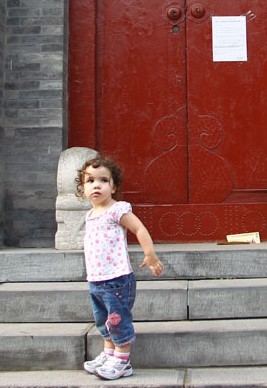

|
|
|
What is hutong? | ||
|
|
Hutong refers to lanes and alleys between the Siheyuan (courtyard with buildings on four sides) residences in Beijing, spreading over every corner of the old city. The dotted hutongs are unique scenery in Beijing profoundly related to the Siheyuan, which, together outlining the casual and charming life of the common people in the old city. Hutong is a transliteration from Mongolian bearing the meaning of walking ground, which has been passed down ever since the construction of Dadu (the capital of Yuan Dynasty, today's Beijing) in 1267. The old hutongs, the fruit of the ancient history of Beijing, have existed for over 700 years till now. After a world of changes through centuries, they have become a symbol of life for People in Beijing. >> | |
|
Top 10 most attractive hutongs in Beijing |
|
|
The Hutong, an old-style city alley or lane, is one of the most distinctive features and must-see attractions in Beijing. There are thousands of hutongs in the city, many of which were built during the Yuan (1206-1368), Ming (1368-1644) and Qing (1644-1911) dynasties. Here are the top 10 most famous hutongs all travelers to the capital city shouldn't miss in order to get a better experience of the unique culture of ancient Beijing. |
|
|
|
|
|
|
| ||
|
|
|
|
Protecting hutongs | |
|
|
Beijing's hutong, the traditional narrow alleys that wind through the city, are struggling to survive, slowly disappearing in the name of modernization. But the local community of Shijia Hutong has found a way to preserve its slice of old Beijing. >>
Related Stories: Hutong threatened by illegal construction Three must-go hutongs, insight into old Beijing Hutong life inspires French artist |
 Local administration has taken a series of measures to protect Hutong, ancient architecture and courtyards in Dongcheng district, including renovation and putting up brands with Chinese-English bilingual introduction for old buildings. |
|
Deep in the hutongs | |
|
High-rise buildings and shopping malls are littered throughout Beijing. But smaller, less visible buildings in the alleys of this modern metropolis are an indispensible part of the city: the hutongs. The gray-tiled old houses and alleys give a wonderful glimpse into traditional Beijing lifestyle and culture. People play, chat, eat and relax together in the hutongs, painting the picture of a lifestyle that is much different from life in the city's high-rise apartments. The four parts of this series aim to explore the hutongs in depth and meet all of the different kinds of people living there. | |
|
|
Part 2: Migrant workers Age and inconvenience – among other factors – have pushed many local Beijingers out of their hutong residences. People are moving from other parts of China to open shops, salons, grocery stores and other small business that are easily accessible to the community. Mr. Ma has been in Beijing for several years and spends his summers selling steamed cold noodles in the hutongs. He is tired, he said, but is making every effort to support his children and wife who are at home in Henan. In our second installation, we follow Mr. Ma to experience his life as a migrant working in the capital city. |
|
Part 1: The old Beijingers Grandma Wu has lived in her hutong house for about 60 years. Despite the area being old and a bit crowded, she is accustomed to the quiet life in the hutong's courtyard. Grandma Wu's son invited her to live with him in a high-rise, but she decided not to leave her kind-hearted neighbors and old friends behind. In this episode, we spend some time with Grandma Wu and get a peek into the life of an old Beijinger in an old Beijing hutong. |
|
|
|
Part 3: The foreigners The historic hutong buildings are also becoming popular pads for young, hip foreigners. Many of them come to Beijing looking to experience the traditions and culture of this ancient capital. Beijing is a modern, buzzing city, but the hutong culture is rooted in old Beijing customs; for this reason, they become a top choice for eager foreigners to live. This video introduces the audience to a Portuguese woman named Carolina. Carolina chats about the charm that drew her and some of her foreign friends into the hutong lifestyle. |
|
Part 4: The visitors Tourists from all around the world pour into the Chinese capital not only to experience the city's modern attractions, but also its old imperial palaces and traditional culture. The old courtyards and hutongs should never be missed. What do people think of hutongs before they visit them? And how do their ideas change afterward? In the series conclusion, we asked seven different visitors to walk us through their first hutong experience. |
|